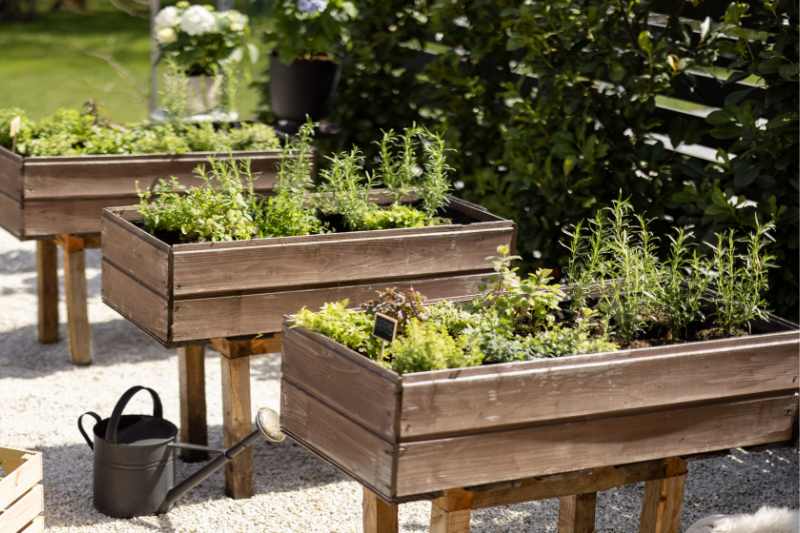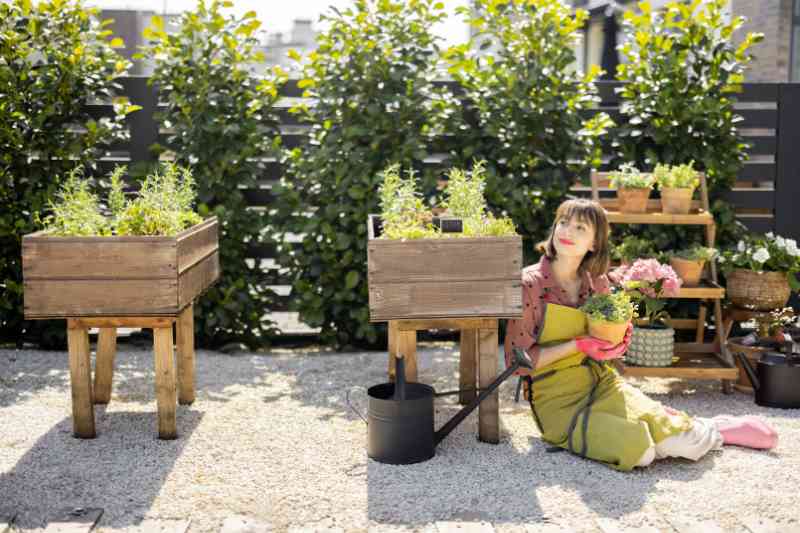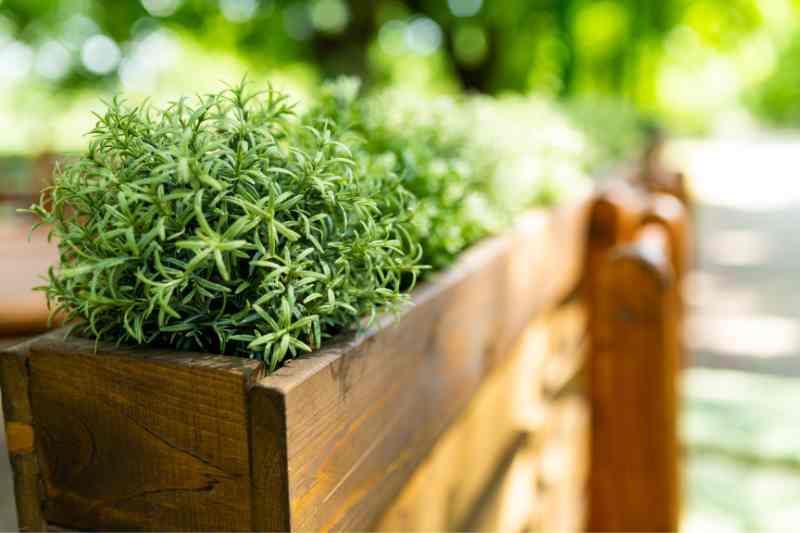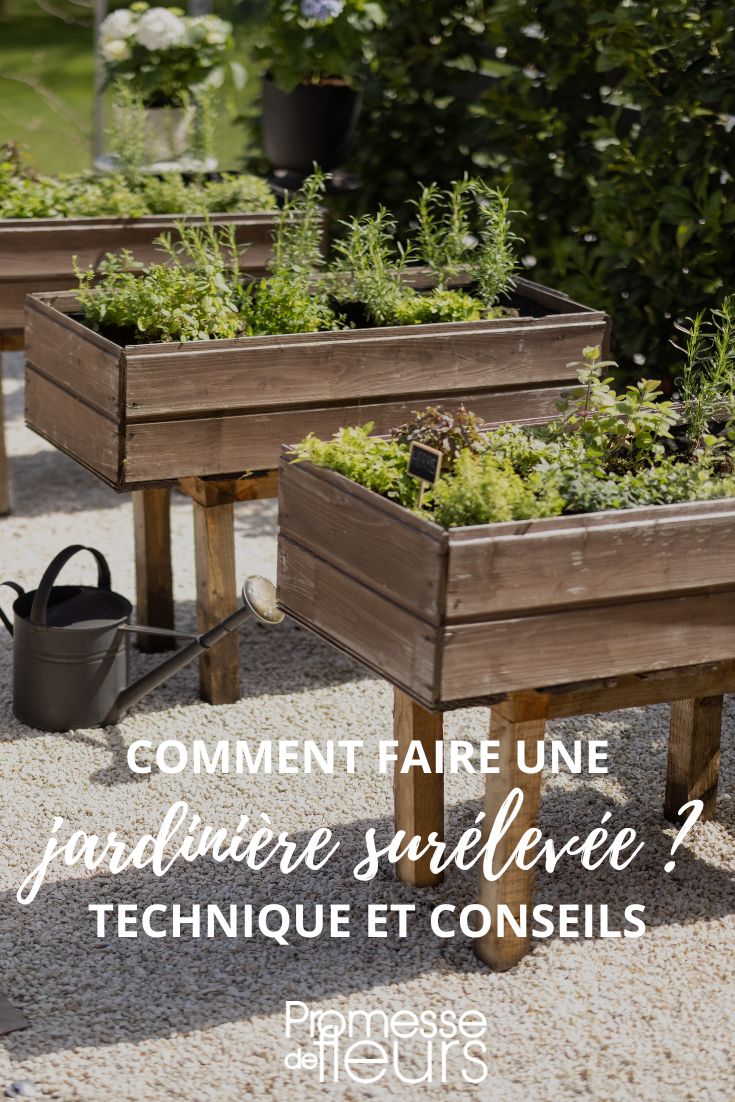Raised planters are very handy for growing a mini vegetable garden on a balcony in an urban environment, or for promoting independence of elderly people or people with disabilities, who therefore do not have to bend down to tend their plantings. These planters on legs are often used to grow vegetables, small fruits or aromatic herbs, like a micro garden above ground, protected from slug attacks or cat claws! Many advantages then, provided they are filled correctly so they fulfil all their promises.

Choosing a raised planter
Raised planters are generally bought when one lives in a block of flats, allowing a garden on legs or an elevated vegetable bed that is comfortable to use. In this case, on a balcony, they also serve as decorative elements and even provide a useful privacy screen.
If you plan to install your raised planter on a residential balcony, take care with material type, since balconies' load-bearing capacities are not all the same depending on year of construction. Check with your building management.
If you install a planter on legs on a solid terrace, weight is no longer an issue and you will have wide choice, notably models in wood.
For all planters on legs, make sure they have sufficient drainage holes in their base.

Rule no. 1: Drainage
Before adding planting mix, as with a standard planting in a planter or pot, drainage of raised planters is the basic step not to forget!
This means filling planter with a first layer of materials that will ensure good drainage, that is to say that will help water to run away so it does not stagnate at bottom, which would be harmful to roots. To a depth of about 5–8 cm depending on depth, fill with clay balls or a mix of gravel.
Just above, ideally place a piece of non-woven fabric cut to planter dimensions so that soil to be added does not mix with drainage layer.
Rule no. 2: Prepare a light, nutritious substrate
A somewhat paradoxical aspect concerns the soil in which you will plant in this mega planter: it must be rich, yet light at same time, given weight restrictions on a balcony. Substrate should be a mix combining nutrient supply and lightness of structure.
A good mix can be made of two-thirds light potting compost, promoting optimal aeration of roots and, moreover, easy to source in town. It should be amended with light or porous elements for remaining third: sand, perlite, or vermiculite which improve soil structure by increasing porosity and helping retention of water and air.
If you have compost, make an ideal mix of 50% compost, 30% potting compost and 20% vermiculite or perlite.
Finally, water-retaining agents based on petrochemical materials can also be used in your substrate preparation to lighten a large planter on legs on residential balconies, but only if you use your planter to to grow ornamental plants.
Also read What is a water-retaining agent, what is it used for and how do you use it? and Turf, sand, perlite, vermiculite, clay balls, pumice: what are they for?
Rule no. 3: Fertilise
You will probably grow hungry plants that will grow all summer in a rather small container for their large needs! So from time to time, you will need to feed them. Fertilisers are indeed essential nutrients that will help plants grow vigorously and produce abundant flowers and/or fruit.
Fertilise from planting to further enrich your substrate, either with sticks or liquid feed, effective and practical. Slow-release fertilisers such as bone meal, or fast-release like dried blood, or a ready-to-use mix of both, are ideal.
Regarding balance between nitrogen, phosphorus and potassium, favour fertilisers high in potassium and phosphorus for flowering annuals or perennials, and a fertiliser also balanced in nitrogen, phosphorus and potassium for large planters that will mainly grow vegetables. Finally, for a raised planter containing mainly aromatic plants, pay attention to their needs, often radically different (also in terms of exposure).
If you have a planter on legs and also have a garden, feel free to use organic amendments such as well-rotted compost or manure: they will markedly improve lightness and water retention of your planter while ensuring fertility of the mix.
Learn more with Olivier's advice in NPK: definition and uses.

































Comments